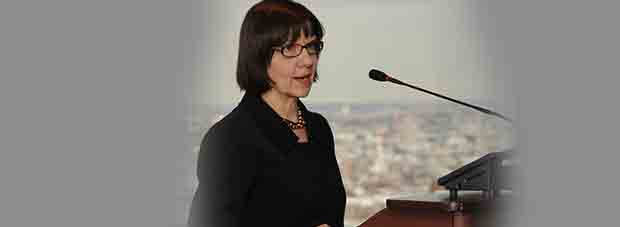FERC’s LaFleur Decries Partisanship and Politicization
"I hate to see things going out along party lines," Cheryl LaFleur, outgoing commissioner of the Federal Energy Regulatory Commission (FERC), told POWER during an exclusive interview. "During my 35 years of watching FERC, that has not been the pattern."
During the early years of the Obama administration, "we didn't think of ourselves as [partisan]," she said. The first whiff of partisan politics she detected was in the second Obama administration, and the Environmental Protection Agency's ambitious agenda to clean up coal plant pollution through the Mercury and Air Toxics Standards and the Clean Power Plan. Congressional Republicans tried to use FERC and reliability issues to foil Obama's plans, but the commission avoided an inter-agency collision.
During the Trump administration, LaFleur said she sees two different threads emerging, partisanship and politicization. She said the current administration has shown "an activism and muscularity" she had not seen before during her nine years at FERC, beginning in the Obama administration. That includes Energy Secretary Rick Perry's early 2017 notice of proposed rulemaking at FERC, which would have put a thumb on the scale of competitive markets to aid primarily out-of-market coal-fired plants and secondarily uneconomic nuclear plants. The commission rejected Perry's initiative unanimously.
LaFleur said she still hears rumbles about "fuel security," the code word for the Perry and Trump coal proposal. "The issue is not over at FERC, we have an open docket on it, and we have not heard the last of the issue."
LaFleur came to FERC with an industry background. She had spent 20 years as a key official at National Grid USA, a large electric distribution company in the Northeast. Her industry experience coincided with the rise of competitive wholesale electric markets in much of the U.S.
"Competitive markets have certainly proven their worth," she said. "We saw that again when the lights stayed on in Texas a week ago." She said that the current situation of different markets in different regions is likely to continue, including traditional vertically integrated generation and distribution utilities; utility-owned and planned generation with competitive transmission and distribution, such as MISO; and full-fledged generation and transmission competitive markets, such as PJM, ISO-NE, and NYISO.
LaFleur also sees adaptations, including imbalance markets in the West, state efforts to adapt to new renewable technologies, and state plans to preserve a role for coal and nuclear generation in capacity markets. "Twenty years in, we are seeing change and adaptation," she said.
LaFleur said she hopes the administration moves swiftly to fill the two vacancies on the five-member commission. One Republican seat is vacant along with LaFleur's Democratic seat, leaving a bare three-member quorum. If any one of the current members recuses himself during a proceeding, the commission will be unable to decide the case.
In similar circumstances in the past, the White House and Congress have paired nominees in order to get a bipartisan consensus. LaFleur said she has not heard if that is the current plan, but she has heard that the Democrats are looking at Allison Clements, a former Natural Resources Defense Council lawyer and director of the Sustainable FERC project.
As for her future, LaFleur has decided not to join a large organization after she leaves FERC this week. Instead, she said, "I have pretty much decided to do a portfolio of things:" some board work, some academic work, some work with non-profits. "I want to use my experience and expertise in the transition to a cleaner energy future."
-Kennedy Maize is a long-time energy journalist and a frequent contributor to POWER.
The post FERC's LaFleur Decries Partisanship and Politicization appeared first on POWER Magazine.
